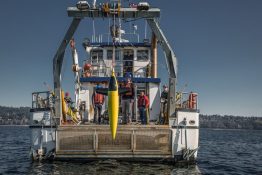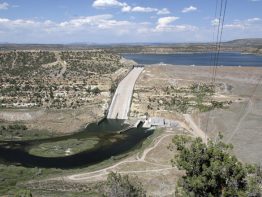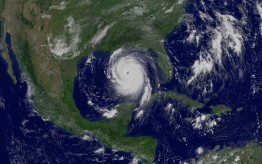One of the biggest unknowns for the future of Earth’s climate is Antarctica, where the West Antarctic Ice Sheet holds so much ice that, if it collapsed, it could bring several feet of rising seas. A new partnership between the University of Washington’s College of the Environment, the UW Applied Physics Laboratory and Paul G. Allen Philanthropies will use a robotic network to observe the conditions beneath a floating Antarctic ice shelf.
Read more at UW Today »Fish to benefit if large dams adopt new operating approach
Thousands of dams built along U.S. rivers and streams over the last century now provide electricity for homes, store water for agriculture and support recreation for people. But they also have downstream impacts: They reduce the amount and change the timing of flowing water that fish rely on for spawning, feeding and migration. Recognizing that many large dams are here to stay, a UW team is investigating an emerging solution to help achieve freshwater conservation goals by re-envisioning the ways in which water is released by dams.
Read more at UW Today »Interdisciplinary UW project seeks sustainable blueprint for hydropower dams
In Southeast Asia along the Mekong River, the debate is over when and how — not whether — dams will be built. The river and its tributaries support what’s likely the largest inland fishery in the world, worth more than $2 billion annually. Every day, 60 million people or more rely on the Mekong for food and their livelihoods. In the coming years, nearly 100 hydropower dams are slated to be built along the main stem of the river’s 2,700-mile stretch and its connected tributaries.
Read more at UW Today »Loose skin and slime protect hagfishes from sharks
Researchers from the University of Washington, Chapman University and University of Guelph have published new research showing how hagfishes — an ancient group of eel-like animals found at the bottom of the ocean — survive an initial attack from predators before they release large volumes of slime to defend themselves. Results show that hagfish skin is not puncture resistant; instead, it is both unattached and flaccid, which helps avoid internal damage from penetrating teeth.
Read more at UW Today »Q&A: UW’s Shuyi Chen on hurricane science, forecasting and the 2017 hurricane season
The United States just suffered the most intense hurricane season in more than a decade, and possibly the costliest ever. Hurricane Harvey hit Houston in mid-August. Hurricane Irma struck Florida in early September, followed just two weeks later by Hurricane Maria in Puerto Rico and the Caribbean. Now, with the close of hurricane season on Nov. 30, new UW faculty member Shuyi Chen, professor in the UW’s Department of Atmospheric Sciences and an expert on hurricanes, answered a few questions about the state of hurricane forecasting and the 2017 storm season.
Read the Q&A at UW Today »





